Film Screening at Former Shiga Elementary School
A film screening was held at the former Shiga Elementary School in Saku City, Nagano Prefecture from June 20 to 22.
The film is called “Haoto,” which was shot mainly at the former Shiga Elementary School.
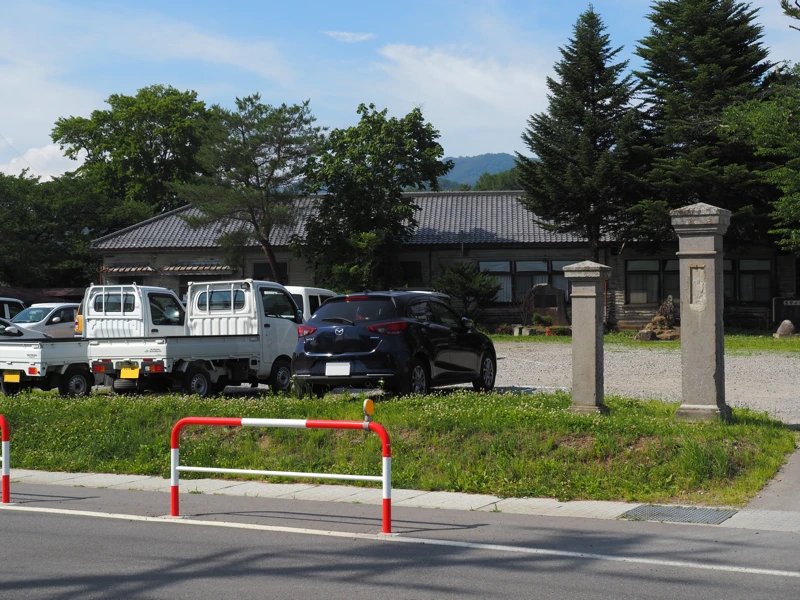
More than a dozen cars were parked in the parking lot. Public facilities are better when people are gathered.
On the first day, the film was shown twice in the afternoon, and on the second and third days, once in the morning and twice in the afternoon.
And this time we could see the inside of the school building. Since I have only been able to visit the outside of the school building, I was excited to be able to go inside.
But we were allowed to enter only the north school building this time.
The film “Haoto” was shot mainly at the former Shiga Elementary School in 2023 and 2012.
The screening of the film was realized as a way to thank the local community for their cooperation in the filming and to help utilize Shiga Elementary School.
The film will open to the public on August 8 of this year, so this is a special advance screening at the former Shiga Elementary School, where the filming took place.
By the way, after watching the movie, I noticed that the aluminum sash frames on the first floor of the school building were painted brown because the movie was set 80 years ago during Pacific War. (The screen door had been removed when the film was shot.)
I had visited here in April of this year, but I had not noticed that it had already been painted brown at that time. I had posted the photo in a past article without noticing.
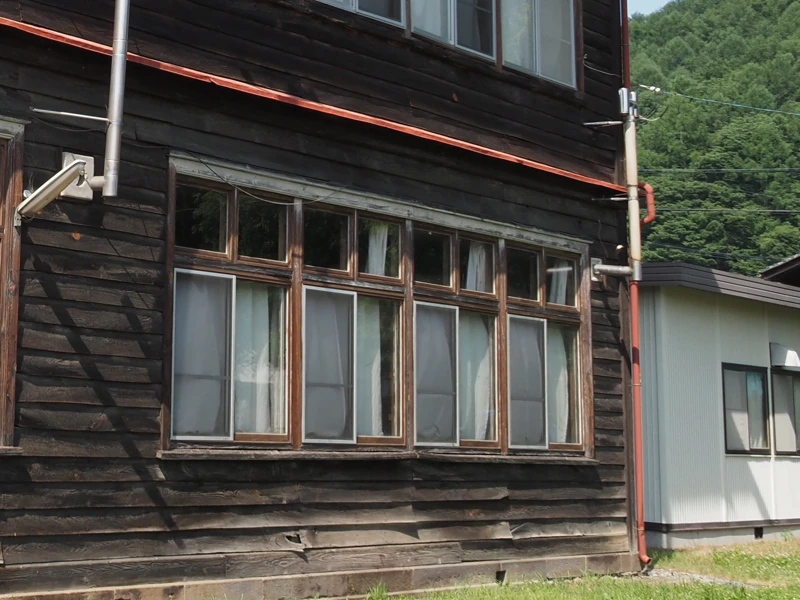
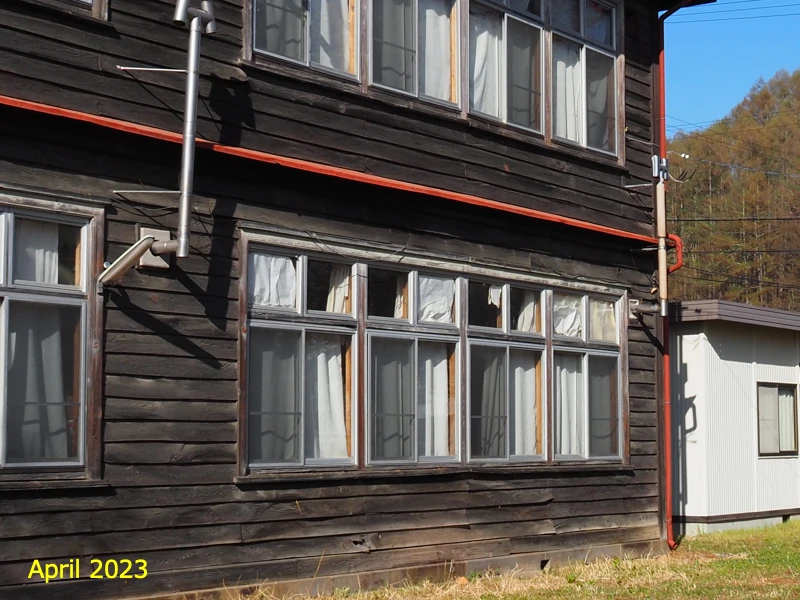
When I looked back at the April 2023 photo, the window frames were silver, just as I remembered them.
What I was curious about is that normally they would put it back to its original condition after using it for filming a movie. Does this mean that Saku City has agreed to leave it as is? Maybe because it is a facility that is no longer in use.
To be honest, I could tell from the screen that it was a sash even if it was painted brown.
Although while I was concerned about such things at the beginning of the film, once I realized that this was a theatrical film, I no longer cared.
According to the film’s official website, it is based on a creative stage play that was performed in 2005.
Since it is a play, there is no point in worrying about the details of the stage set.
Moreover, this time, the play is being performed at the former Shiga Elementary School, where the play was staged. I felt as if the play were being performed right where I was.
The screening venue was one of the old classrooms. I did not count the number of seats, but I guess there were about 40 people in the room. The session I saw was full.
It seems that some Saku citizens volunteered to participate in the filming or appeared as extras. For those people, it must have been a moving experience to see their film take shape.
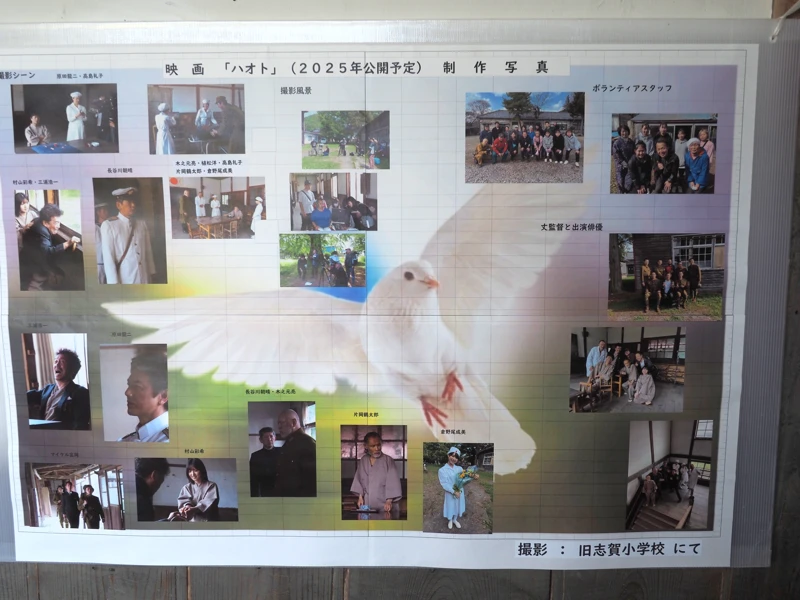
Inside the school building, there was a display of snapshots of the performers and scenes from the filming. The volunteer staffs were also in the picture.
This was before the reception, but since I arrived early, I walked around the grounds and felt fresh when I saw the windows of the school building open. I had only seen the school building without people in it before.
The room at the end of the first floor was being used as a café that day. It is nice to see a building in use.
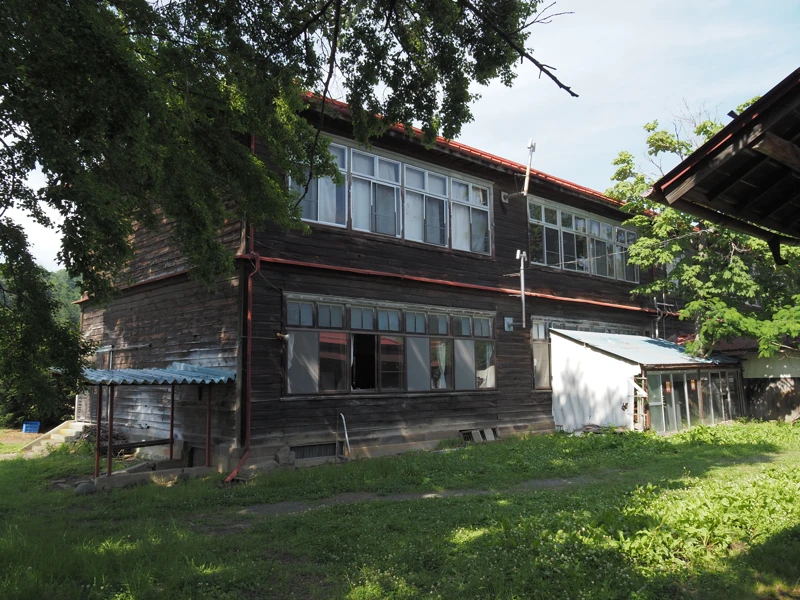
The Saku City Board of Education’s Cultural Promotion Division, the Saku City Tourism Division, and the “Volunteers Group for the Preservation and Utilization of the Former Shiga Elementary School” are cooperating with the screening this time.
“We are working to preserve and make effective use of this important building, built in the Meiji era, to make it a place where everyone can gather and where the community can live happily and energetically."
“The building is owned by Saku City, so in order for it to be preserved and utilized, it must be a facility that many in the community agree with and will use."
I thought it was good that the goal was not to call for the preservation of the school building, but to utilize it and make it a place where people can gather.
People who are interested in architecture are tempted to say save the building, and as an example of other buildings, some people even say, “It’s okay to just save it even if you don’t use it". However, there are so many buildings that have decayed because they were only preserved in form without being used.
I believe that the value of a building comes alive only when it is used.
It would be best if they are used more and more to enrich the life of the community.
However, if the buildings are to be used continuously, they must be earthquake resistant and safe. It also needs to consider how to provide restrooms and other facilities.
How can they coordinate with the owner, the city?
I am sure that there are many issues to be addressed, but I am rooting for the activities of the Volunteers Group for Preservation and Utilization to be successful.
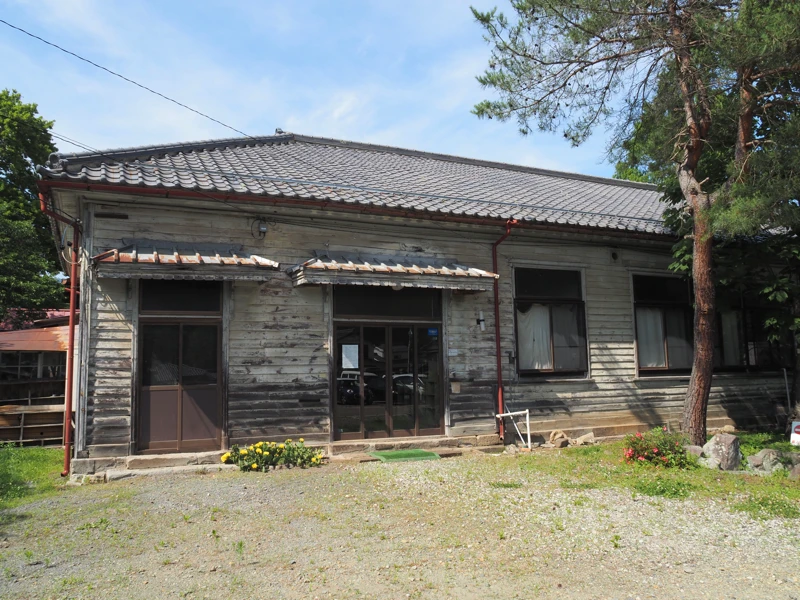
(I put this article in the category of “community development,” not buildings. I will write a separate article on the inside of the school building.)
[Related website]
"The Movie 'HAOTO’ Official Website" (written in Japanese)“
[Related articles]
"Former Shiga Elementary School (2025)" (2025-04-24)
"Preservation and utilization of the former Shiga Elementary School" (2024-09-21)
"Former Shiga Elementary School with Cherry Blossoms" (2023-04-14)
"Revisiting the former Shiga Elementary School" (2021-05-11)
"Visit to the former Shiga Elementary School" (2020-09-28)
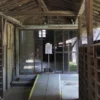



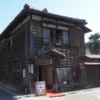

Discussion
New Comments
No comments yet. Be the first one!